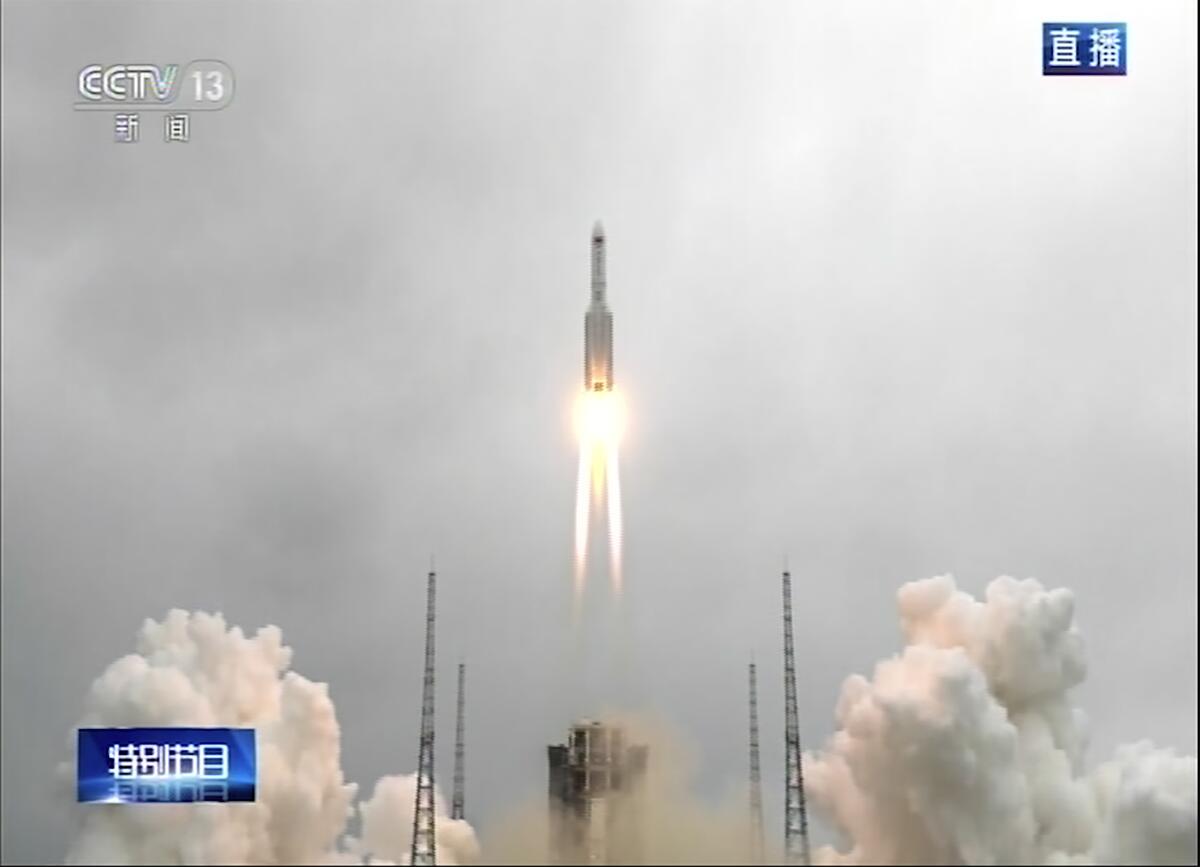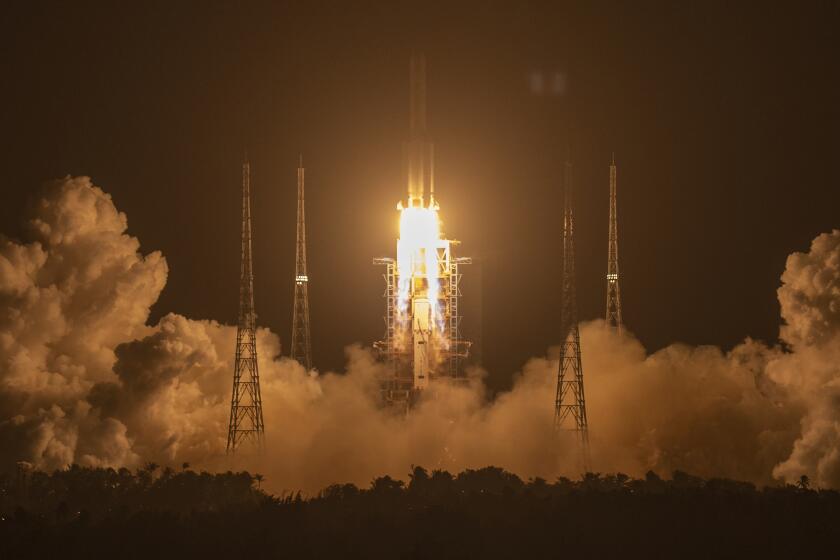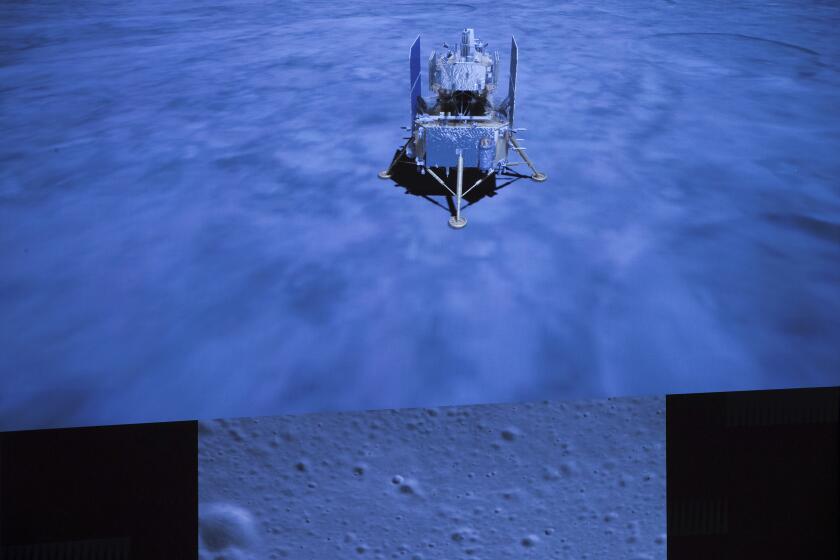China launches main module of its planned space station

- Share via
BEIJING — China on Thursday launched the main module of its first permanent space station, the latest success for a program that has realized a number of its growing ambitions in recent years.
The Tianhe, or “Heavenly Harmony,” module blasted into space atop a Long March 5B rocket from the Wenchang Launch Center on the southern island province of Hainan, marking another major advance for Chinese space exploration.
The launch begins the first of 11 missions necessary to complete, supply and crew the station by the end of next year. The station is expected to host astronauts on long-term missions.
China’s space program has also recently brought back the first new lunar samples in more than 40 years and expects to land a probe and rover on the surface of Mars later next month.
Minutes after Thursday’s launch, the rocket’s fairing opened to expose the Tianhe, which had the characters for “China Manned Space” emblazoned on its exterior. Soon afterward, the Tianhe separated from the rocket, which will orbit for about a week before falling to Earth, and opened its solar arrays a few minutes later to provide a steady energy source.
The space program is a source of huge national pride in China, and Premier Li Keqiang and other top civilian and military leaders watched the launch live from the control center in Beijing. A message of congratulations from President Xi Jinping was also read to staff at the Wenchang Launch Center.
China and Russia plan to build a lunar research station, possibly on the moon’s surface, marking the start of a new era in their space cooperation.
The launch furthers China’s “three-step” strategy of building its manned space program and marks “an important leading project for constructing a powerful country in science and technology and aerospace,” Xi’s message said.
The space station’s core module is the section where astronauts will live for up to six months at a time. Another 10 launches will send up two more modules, in which crews will conduct their experiments; four cargo supply shipments; and four missions with crews.
At least 12 astronauts are training to fly to and live in the station, including veterans of previous flights and newcomers. The first crewed mission, Shenzhou-12, is expected to be launched by June.
When completed by late 2022, the T-shaped Chinese Space Station is expected to weigh about 66 tons, considerably smaller than the International Space Station, which launched its first module in 1998 and will weigh about 450 tons when completed.
Three countries sent spacecraft to Mars, and robotic explorers grabbed moon rocks and asteroid rubble. Space offered moments of hope amid COVID-19.
Tianhe will have a docking port and will also be able to connect with a powerful Chinese space satellite. Theoretically, it could be expanded to as many as six modules. The station is designed to operate for at least 10 years.
Tianhe is about the size of the American Skylab space station of the 1970s and the former Soviet Union’s Mir, which operated for more than 14 years after launching in 1986.
China began working on the project in 1992, just as its space ambitions were taking shape. The need to go it alone became more urgent after it was excluded from the International Space Station, largely because of U.S. objections over the Chinese program’s secretive nature and close military ties.
After years of successful rocket and commercial satellite launches, China put its first astronaut into space in October 2003, becoming only the third country to independently do so after the former Soviet Union and the United States.
NASA’s little Mars helicopter has aced its second test flight.
Along with more crewed missions, China launched a pair of experimental, single-module space stations: Tiangong-1, which means “Heavenly Palace-1,” and its successor, Tiangong-2. The first burned up after contact was lost and its orbit decayed, while the second was successfully taken out of orbit in 2018.
The Tiangong-2 crew stayed aboard for 33 days.
China is also forging ahead with crewless missions, particularly in lunar exploration, and it has landed a rover on the little-explored far side of the moon. In December, its Chang’e 5 probe returned lunar rocks to Earth for the first time since the U.S. missions of the 1970s.
Meanwhile, a Chinese probe carrying a rover is due to set down on Mars sometime around the middle of next month, making China only the second country to successfully accomplish that after the U.S.
The Tianwen-1 space probe has been orbiting the red planet since February while collecting data. Its Zhurong rover will be looking for evidence of life.
More to Read
Sign up for Essential California
The most important California stories and recommendations in your inbox every morning.
You may occasionally receive promotional content from the Los Angeles Times.













